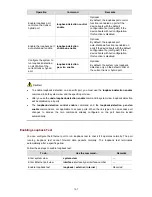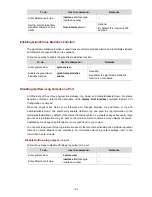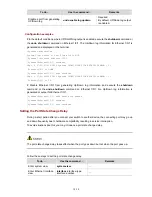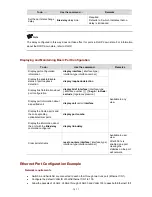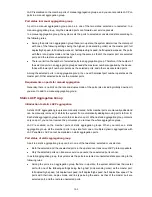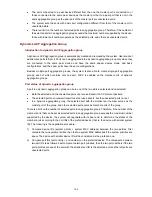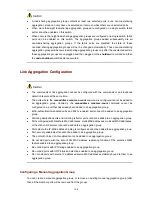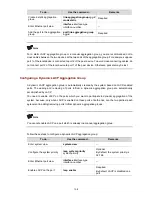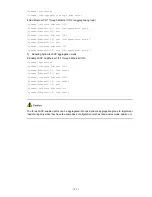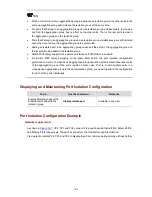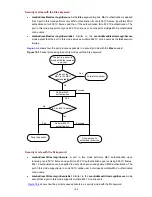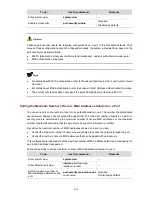
For a manual aggregation group, a port can only be manually added/removed to/from the manual
aggregation group.
Follow these steps to configure a manual aggregation group:
To do…
Use the command…
Remarks
Enter system view
system-view
—
Create a manual aggregation
group
link-aggregation group
agg-id
mode
manual
Required
Enter Ethernet port view
interface interface-type
interface-number
—
Add the Ethernet port to the
aggregation group
port link-aggregation group agg-id
Required
Note that:
1) When creating an aggregation group:
z
If the aggregation group you are creating already exists but contains no port, its type will change to
the type you set.
z
If the aggregation group you are creating already exists and contains ports, the possible type
changes may be: changing from dynamic or static to manual, and changing from dynamic to static;
and no other kinds of type change can occur.
z
When you change a dynamic/static group to a manual group, the system will automatically disable
LACP on the member ports. When you change a dynamic group to a static group, the system will
remain the member ports LACP-enabled.
2) When a manual or static aggregation group contains only one port, you cannot remove the port
unless you remove the whole aggregation group.
Configuring a Static LACP Aggregation Group
You can create a static LACP aggregation group, or remove an existing static LACP aggregation group
(after that, the system will re-aggregate the original member ports in the group to form one or multiple
dynamic aggregation groups.).
For a static aggregation group, a port can only be manually added/removed to/from the static
aggregation group.
When you add an LACP-enabled port to a manual aggregation group, the system will automatically
disable LACP on the port. Similarly, when you add an LACP-disabled port to a static aggregation group,
the system will automatically enable LACP on the port.
Follow these steps to configure a static LACP aggregation group:
To do…
Use the command…
Remarks
Enter system view
system-view
—
13-7



